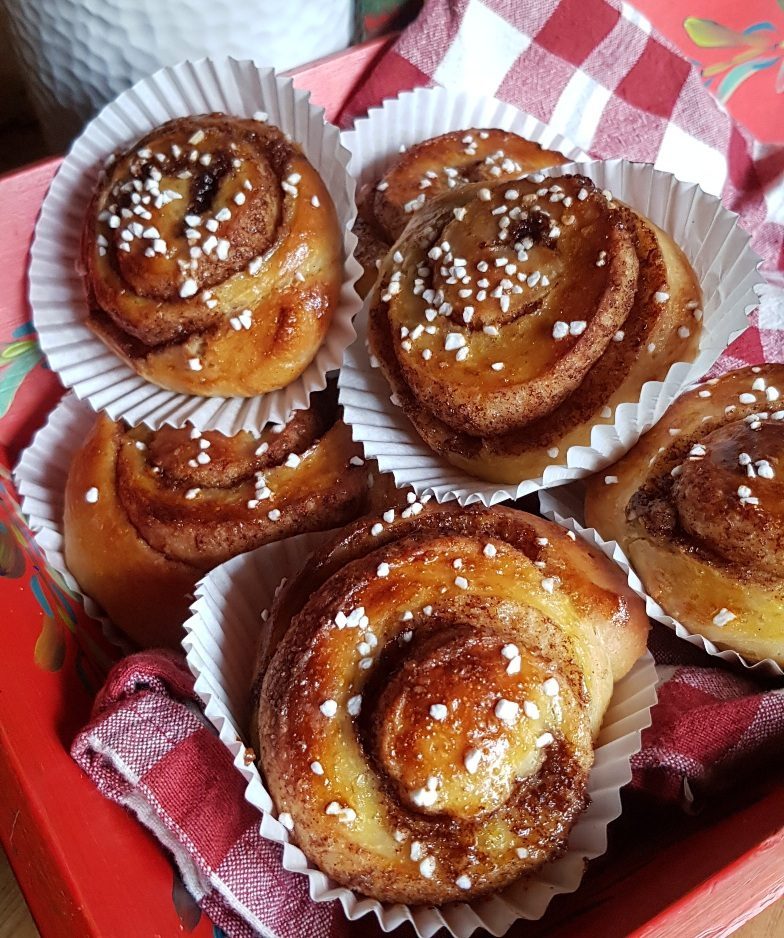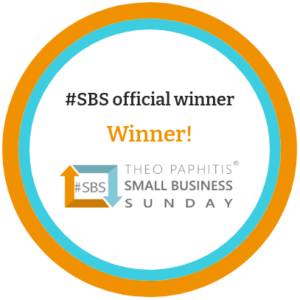When it comes to embracing the cosy and comforting world of Scandinavian culture, few traditions are as universally beloved as fika. Pronounced “fee-ka,” this cherished Swedish ritual goes far beyond just a coffee break. It’s a moment of pause, a time to connect with others, and a delightful excuse to indulge in some of the most delicious pastries the Nordic countries have to offer.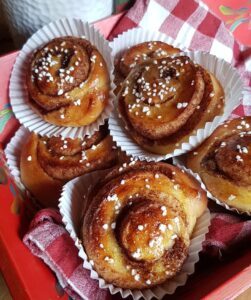 What is fika?
What is fika?
At its core, fika is a cultural institution in Sweden. It’s a dedicated time to step away from the hustle and bustle of daily life, often twice a day—once in the morning and once in the afternoon. Whether you’re in the middle of a workday or enjoying a lazy weekend, fika is an opportunity to slow down, savor a cup of coffee or tea, and enjoy a sweet treat, usually in the company of others. It’s about more than just food; it’s about connection and enjoying the simple pleasures of life. Like gossip.
What is the origin of the word “fika”?
The word itself is believed to have originated as a slang term in the 19th century. It’s thought to be a reversed form of “kaffi,” which was an old spelling of “kaffe,” the Swedish word for coffee.
What do I need for fika?
Well, a big cup of coffee is a good place to start, but no fika is complete without something sweet, and Scandinavian pastries are the perfect companions to your hot beverage. Here are a few of the most popular treats you might encounter in Sweden:
- Kanelbullar (Cinnamon Buns)
Perhaps the most famous of all Swedish pastries, kanelbullar are soft, spiced buns rolled with a cinnamon-sugar filling and often topped with pearl sugar. They’re the quintessential fika treat, offering a perfect balance of sweetness and spice that pairs wonderfully with coffee. - Mandelkaka (Almond Cake)
This Swedish almond cake is a true delight for those who appreciate a denser, nutty flavor. Mandelkaka is often enjoyed with a dusting of powdered sugar on top or a thin layer of glaze, making it both simple and elegant.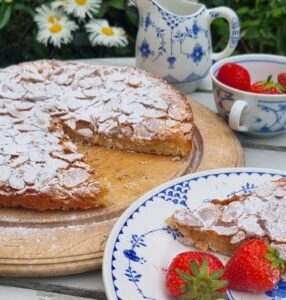
- Prinsesstårta (Princess Cake)
A more elaborate option, prinsesstårta is a layered sponge cake filled with cream, jam, and custard, all encased in a layer of green marzipan. It’s traditionally topped with a pink marzipan rose and is a popular choice for special occasions. While not an everyday fika treat, it’s a must-try for those who want to experience a bit of over-indulgence 🙂 - Chokladbollar (Chocolate Balls)
Our favourite! Simple yet satisfying, chokladbollar are no-bake treats made from oats, butter, sugar, cocoa powder, and a splash of coffee, all rolled into balls and coated in coconut. They’re quick to make and incredibly popular, especially among children. - Semla (Lenten Buns)
Originally enjoyed only on Shrove Tuesday, semla buns are now available in Swedish bakeries throughout the year. These cardamom-spiced buns are filled with almond paste and whipped cream, making them a rich and indulgent treat. - Kladkakka (Gooey Chocolate Cake) Our family fave! Quick to mix up, this delicious and squidgy treat can be made in advance and baked when the oven is on; just as perfect for kids after school as it is a dinner party pudding!
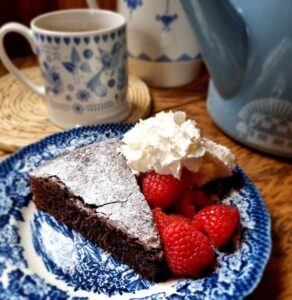
Beyond fika: the joy of Scandinavian baking
While fika is a cornerstone of Swedish culture, the love of baked goods extends across all Scandinavian countries, each bringing its own twist to traditional recipes. In Denmark, you might savor a buttery wienerbrød (Danish pastry) or lemony citronmåne, while in Norway, skolebrød (school bread) with its custard filling and coconut topping is a favorite. These pastries aren’t just for coffee breaks—they’re woven into the fabric of everyday life, from breakfast tables to festive celebrations; so much more satisfying than a jam doughnut from the petrol station 🙂
Can I fika at work?
Yes! Absolutely you can, it is fully ingrained in Swedish work culture (and Gem and I are no strangers to a strong coffee and a cinnamon bun when it’s hectic here at Hyggestyle HQ! Here’s how it typically unfolds in an office setting:
- Timing: Fika usually happens twice a day: around 10 AM and 3 PM. However, it can vary depending on the company culture.
- Location: Many offices have designated fika rooms or kitchens. If not, people often gather in common areas or even at their desks.
- Food and Drink: The classic combination is coffee and a cinnamon bun, but the options are endless; we regularly test all the sweeties we sell, just to make sure they are good enough for you, of course!
Bringing fika home
One of the beautiful aspects of fika is how easy it is to just calm down for half an hour and forget about the dishwasher. You don’t need to bake from scratch every time—shop-bought pastries or even a simple piece of chocolate can do the trick. The key is to create a space of relaxation and enjoyment; I personally am a huge fan of a spoonful of Nutella eaten straight from the jar when I need a little break and a sugar kick! And if you fancy learning a little about hygge, read our top ten tips to add a little hygge to your life here!

